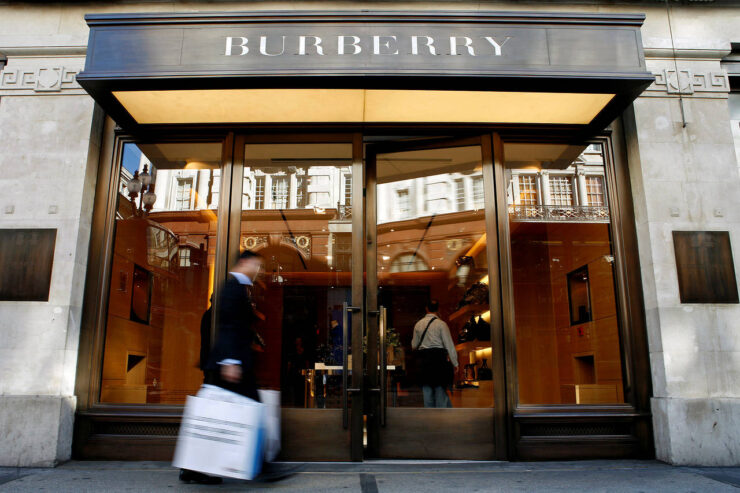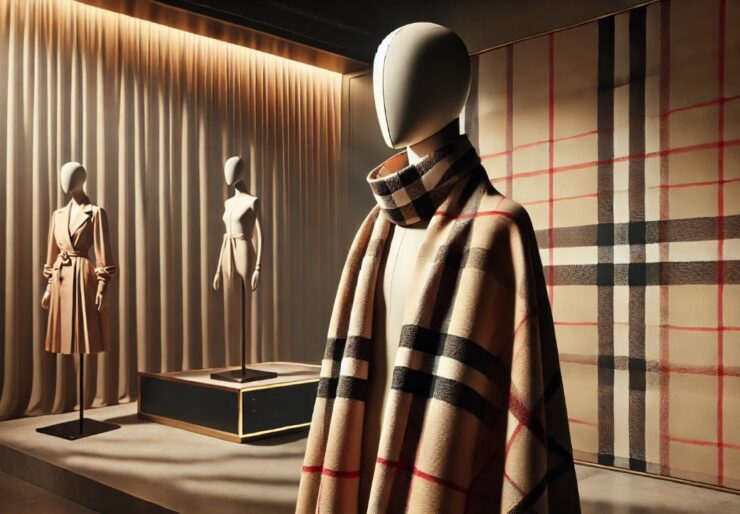Burberry is one of those names that instantly sparks recognition. Today, it represents British luxury, timeless trench coats, and international runway shows.
Yet its history isn’t a straight climb up the prestige ladder. At one point, Burberry’s iconic check pattern was linked with football hooliganism and working-class subculture in England – a reputation that nearly derailed the brand’s global ambitions.
Understanding how Burberry transitioned from being stigmatized on the streets to regaining its position as a top global fashion house reveals both the challenges and resilience behind modern branding.
From Trench Coat Heritage to a Street Symbol
Burberry was founded in 1856 by Thomas Burberry, originally as an outfitter for outdoor wear. The trench coat, created from the brand’s gabardine fabric, became synonymous with functionality and British elegance. For decades, it symbolized durability, status, and understated style.
But in the late 20th century, the brand’s most recognizable feature – the beige check – began appearing in a very different context. In the 1980s and 1990s, as football fan culture intensified, Burberry caps, scarves, and jackets became unofficial uniforms for certain hooligan groups. It was an easy way to signal identity: the check was distinct, widely available, and aspirational. The look spread through stadium terraces and working-class pubs, turning Burberry from a heritage label into a symbol of defiance and aggression.
The Hooligan Reputation and Its Impact
As hooligan culture escalated, Burberry’s image suffered. The pattern that once adorned aristocrats and celebrities now became associated with violence and rebellion. By the early 2000s, several pubs and nightclubs in the UK openly banned patrons wearing Burberry check. The stigma was so strong that “chav culture,” a derogatory stereotype in British media, cemented the association further.
This wasn’t just a matter of reputation – it directly hurt business. Luxury shoppers avoided the brand, believing it had lost exclusivity. Burberry’s presence in discount outlets and knockoffs only amplified the problem. For a heritage house, the check that once embodied elegance now posed an existential threat.

Rebuilding the Brand ─ A New Direction
The turnaround began in the late 1990s and early 2000s, when Burberry brought in new leadership. Rose Marie Bravo, and later creative director Christopher Bailey, made bold moves. They scaled back the overexposed check, limiting it to accessories and interior linings rather than plastering it across garments.
At the same time, Burberry invested in revamping its runway presence. Fashion shows started featuring minimalist designs, luxury fabrics, and a younger aesthetic that appealed to cosmopolitan audiences. By reframing the brand around its trench coat heritage and British identity, Burberry began reclaiming its reputation.
For many, this shift mirrored broader social changes. The same working-class associations that once tarnished Burberry eventually gave way to a new global consumer base that valued heritage brands with authentic stories.
A Parallel in Liverpool ─ Shifting Cultural Spaces
To understand Burberry’s revival, it helps to see how British culture itself has rebranded over time. Cities like Liverpool, once known for gritty football rivalries, now promote themselves as vibrant destinations blending history and modernity. The city offers cultural landmarks, nightlife, and boutique stays.
If you’re planning a visit, you’ll find options like an aparthotel Liverpool city, which give you the flexibility of a hotel with the comfort of a home-style space. Much like Burberry’s own reinvention, Liverpool has embraced its past while reshaping its future – a city that balances tradition with contemporary living.
This evolution mirrors Burberry’s transformation: reputations can change with the right vision, timing, and cultural awareness.

Burberry on the Runway ─ Heritage Meets Modernity
By the mid-2000s, Burberry had repositioned itself firmly in the luxury category. Campaigns featured Kate Moss, Emma Watson, and international stars, aligning the brand with youth, glamour, and sophistication. Its digital strategy also broke ground – Burberry was among the first major luxury brands to live-stream fashion shows and embrace social media as part of its identity.
The trench coat remained central, but now it came in innovative cuts, bold colors, and collaborations. The balance between old-world craftsmanship and cutting-edge appeal turned Burberry into a global powerhouse.
Global Expansion and Cultural Relevance
Once the stigma of hooliganism faded, Burberry expanded aggressively into international markets. Asia became a major growth driver, with flagship stores in Shanghai, Tokyo, and Seoul. In the United States, Burberry found resonance with urban culture, as hip-hop artists began adopting the check in a celebratory, rather than rebellious, context.
This global embrace meant that what was once a local stigma in the UK no longer defined the brand. Instead, Burberry became shorthand for luxury, Britishness, and reinvention.
Lessons in Reinvention
Burberry’s journey offers a fascinating lesson for brands navigating cultural associations:
- Control of symbols matters ─ Allowing overexposure of a logo or pattern can dilute exclusivity.
- Leadership drives transformation ─ Strategic creative direction was essential in shifting perceptions.
- Culture changes perceptions ─ What was once stigmatized can be reframed for new audiences.
- Global markets rewrite narratives ─ A local issue doesn’t have to define a brand’s worldwide image.
These lessons explain why Burberry today is once again celebrated on red carpets and in high streets alike, rather than banned at pubs.

The Burberry of Today and Tomorrow
In 2025, Burberry stands as one of the most recognized luxury brands globally. It continues to honor its heritage with trench coats and the check pattern – now reintroduced in carefully curated ways – while embracing sustainability and digital innovation. New creative directors have taken the reins, but the core mission remains the same: to keep Burberry relevant while staying true to its roots.
Just as England’s cultural exports – music, football, design – have found global resonance, Burberry shows that a brand once trapped in negative stereotypes can reinvent itself into a global symbol of sophistication.
Conclusion
Burberry’s story is more than a tale of a fashion label. It’s a case study in resilience, cultural awareness, and strategic reinvention. From the terraces of English football stadiums to the runways of Paris and Milan, the brand has transformed stigma into strength. Today, Burberry isn’t just about coats and checks – it’s about heritage reborn, proving that even the most tarnished symbols can become timeless again.

